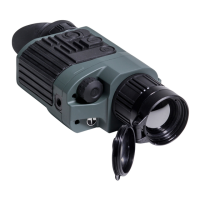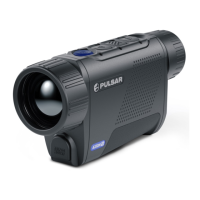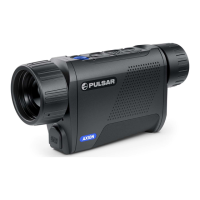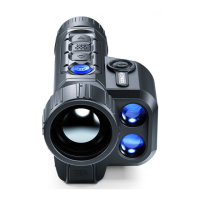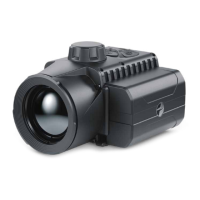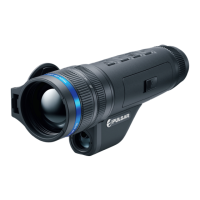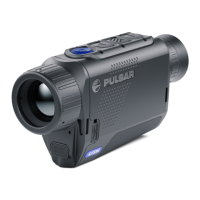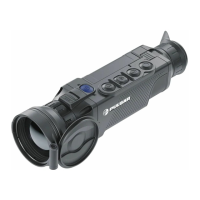TROUBLESHOOTING
13
Listed below are some potential problems that may occur when using the
scope. Carry out the recommended checks and troubleshooting steps in
the order listed. Please note that the table does not list all of the possible
problems. If the problem experienced with the scope is not listed, or if the
suggested action meant to correct it does not resolve the problem, please
contact the manufacturer.
PROBLEM
POSSIBLE CAUSE CORRECTIVE ACTION
The unit will
not turn on.
The image is blurry, with
vertical stripes and uneven
background.
The image is too dark.
Batteries have been wrongly
installed.
Oxidized contact points in
the battery compartment
due to “leaky” batteries or
contact points becoming
exposed to a chemically
reactive solution.
The batteries are fully
exhausted.
Calibration is to be done.
Brightness or contrast level
is too low.
Reinstall the batteries
observing polarity.
Clean the battery
compartment, focusing on
the contacts.
Install fresh batteries.
Do the calibration
according to section 8
“OPERATION”.
Adjust brightness/contrast
by rotating the controller
(2).
The unit does not operate
on external power supply.
Charge the power supply
(if required).
Poor image quality /
Detection range decreases.
Problems described may arise in inclement weather
conditions (snow, rain, fog etc.).
The scope cannot be started
with wireless remote control.
Remote control is not activated.
Low battery.
Activate the remote control
according to instructions.
Install a new CR2032
battery.
Click on the link to read frequently questions on thermal vision
http://www.pulsar-nv.com/support/faq/
Make sure your power
supply provides output
voltage.
The scope can be used in operating temperatures ranging from -25 °C
to +50 °C. However, if it has been brought indoors from cold
temperatures, do not turn it on for at least 2-3 hours. This will prevent
external optical surfaces from fogging.
Always store the unit in its carrying case in a dry, well-ventilated space.
Remove the batteries if the scope is not going to be used for an
extended period (longer than one month).
Batteries shall not be exposed to excessive heat such as sunshine, fire
or the like.
16
17
No image when recording
video signal from the
thermal imager using an
external video recorder.
Video output of the thermal
imager is disabled.
No connection.
Activate the video output
(see point “Selection/
Disable of video output
signal”, chapter 9. MENU).
Make sure the video cable
is securely connected.
During observation a light or
a dark spot/circle sometimes
appears in the centre of the
display. Why does it
happen? Is it a defect?
The light or dark spot effect in the centre of the image in
Quantum thermal imagers may appear if the objective lens is
in unfocused position when observing objects with an even
temperature background. This effect is either not present or
insignificant when focusing directly on a certain object.
The spot effect is due to the constructive peculiarity of the
objective lens and is most noticeable in extreme non-
operating lens focus positions when observing objects with
uniform low temperature contrast, i.e. clear sky. This is not a
defect.
PROBLEM
POSSIBLE CAUSE CORRECTIVE ACTION
When using the scope at
negative temperatures
image quality is worse than
at positive temperatures?
Due to various thermal conductivity, objects (surrounding
environment, background) under observation get warm faster
at positive temperatures, which allows higher temperature
contrast and, thus, quality of the image produced by a thermal
imager, will be better.
At low operating temperatures objects under observation
(background) normally cool down to roughly equal
temperatures which leads to lower temperature contrast, and
to image quality (precision) degradation. This is normal for
thermal imaging devices.

